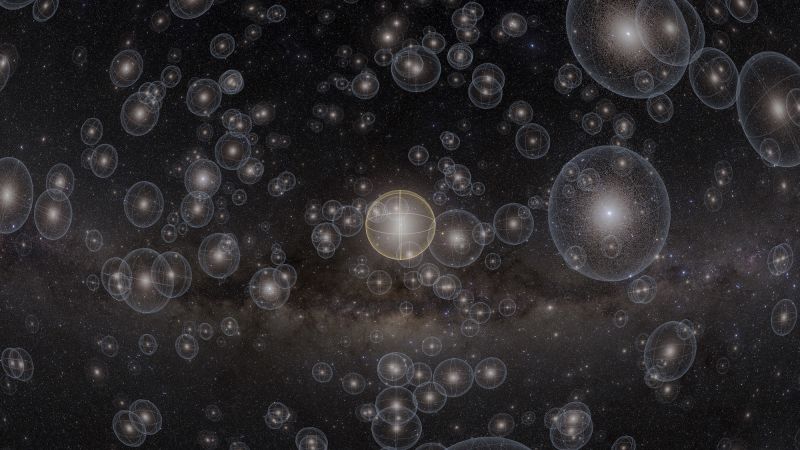
NEW YORK CITY – A serendipitous discovery during a planetarium show has unveiled a previously unseen spiral structure within our solar system’s enigmatic Oort Cloud, potentially reshaping our understanding of this distant region.
Immediate Impact
The Oort Cloud, a vast expanse of icy bodies orbiting the sun at a distance 1,000 times further than Neptune, has long been theorized to be spherical. However, during the preproduction of “Encounters in the Milky Way,” which premiered at the Hayden Planetarium in New York City, a projection revealed an unexpected spiral pattern.
Key Details Emerge
In September, curators were testing a scene depicting Earth’s celestial neighborhood, extending to the solar system’s outer reaches. Jackie Faherty, an astrophysicist at the American Museum of Natural History and curator of the show, described the moment of discovery: “We hit play on the scene, and immediately we saw it. It was just there.”
“I was confused and thought that was super weird. I didn’t know if it was an artifact, I didn’t know if it was real.” — Jackie Faherty
Faherty consulted with David Nesvorny, a scientist at the Southwest Research Institute and an Oort Cloud expert, who confirmed the spiral’s presence after reviewing his data. Nesvorny later published a paper in The Astrophysical Journal detailing the findings.
By the Numbers
- The Oort Cloud extends up to 1.5 light-years from the sun.
- Composed of icy bodies, fewer than 60 miles in diameter.
- Potentially contains trillions of objects.
Background Context
The Oort Cloud was first proposed by Dutch astronomer Jan Oort in 1950 as a shell of icy bodies influenced by planetary movements. These bodies occasionally become comets, providing insights into the cloud’s distant origins.
Nesvorny’s data, which had never been visualized in three dimensions, revealed the spiral structure. “I never looked at it in Cartesian coordinates,” he admitted, noting the spiral’s obvious presence once viewed from this perspective.
Expert Analysis
To validate the discovery, Nesvorny employed NASA’s Pleiades Supercomputer for extensive simulations. All models confirmed the spiral, attributed to the galactic tide’s influence on the Oort Cloud’s objects.
“The spiral is in the inner part of the Oort Cloud, the closest to us, while the outer portion remains spherical.” — David Nesvorny
Astrophysicist Malena Rice of Yale University, who was not involved in the study, emphasized the broader implications: “This result reshapes our mental image of our home solar system, while also providing a new sense for what extrasolar systems’ Oort clouds may look like.”
What Comes Next
Despite the theoretical nature of the findings, the Vera C. Rubin Observatory in Chile may help identify individual icy bodies within the Oort Cloud, offering further insights. However, Nesvorny cautioned that observing the spiral would require identifying hundreds of such bodies.
“It therefore seems unlikely to be a clearly detectable structure.” — Simon Portegies Zwart, Leiden University
Faherty sees the discovery as an opportunity to engage the public with cutting-edge science: “I truly believe that the planetarium, the dome itself, is a research tool.”
The revelation of the spiral structure in the Oort Cloud underscores the dynamic nature of our solar system and its interaction with the broader galaxy. As research continues, this discovery may offer new perspectives on the formation and evolution of solar systems.





